The biggest news in the camera industry this month is that Nikon is reportedly halting development of new SLR cameras, marking the end of a 63-year run. From now on, it will focus exclusively on mirrorless Z mount models like the Z6, Z50 and recently-launched Z9 flagship.
This is a seismic industry change, as Nikon has a storied history with SLRs going back to the iconic Nikon F launched in 1959. But it’s not the only company going in this direction: Canon already confirmed that the EOS-1DX Mark III will be its final flagship DSLR, and Sony moved to selling only mirrorless cameras last year.
Until recently, reflex cameras were regarded as a better option than mirrorless for action photography, so what happened? Simply put, mirrorless models improved so dramatically over the past couple of years that they rendered DSLRs moot.
A lot of pro photographers are holding onto their DSLRs, and the main reason is speed. As we explained several years ago in our Upscaled series, reflex cameras have dedicated autofocus sensors under the mirror. They’re extremely fast, so they allow for high burst shooting speeds with accurate focus on each shot. Canon’s 1DX III, for example, can shoot at up to 16 fps with AF and auto exposure enabled.
Many serious shooters still prefer an optical viewfinder, too. They want a subject view they can trust and believe that a physical view via a prism and mirror is superior to an artificial electronic display. The drawback, of course, is that you can’t see the image when you shoot it because the mirror lifts up to block the display.
The last big thing is battery life and handling: Flagship DSLRs have heavy bodies and big grips that make for stable shooting platforms, particularly with the massive telephoto lenses used by sports and wildlife photographers. They’re also covered with dials and buttons for easier handling. And the optical viewfinder obviously doesn’t drain the battery, so DSLRs can shoot many more photos on a charge.
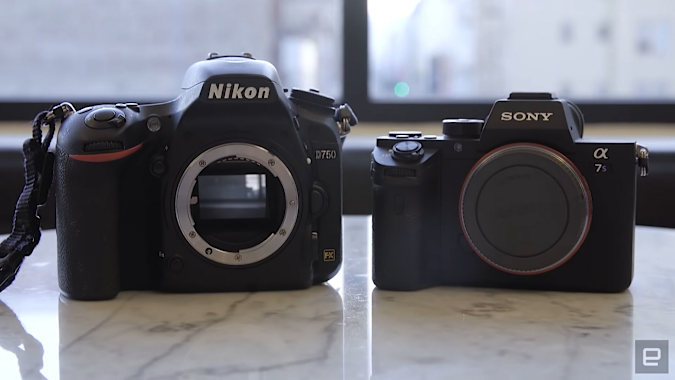
Engadget
That’s been true even until recently, but the latest mirrorless cameras have allayed most of those concerns. The most important change has been the introduction of stacked sensors. Those have much faster readout speeds that allow for rapid burst shooting and more accurate autofocus. They also produce less rolling shutter in electronic mode, reducing skew in photos and wobble in video.
Canon’s EOS R3 is a great example of that. It’s a bit slower than the 1DX Mark III DSLR in mechanical shutter mode but far faster with the electronic shutter, and delivers more resolution. Sony’s A1 is even more impressive, letting you fire off 50-megapixel RAW frames at 30 frames per second.
Perhaps the most vivid display of stacked sensor power is Nikon’s new flagship Z9. It lets you shoot RAW 46-megapixel images at 20 fps with the electronic shutter and doesn’t even have a mechanical shutter. By comparison, Nikon’s flagship D6 DSLR can handle 14 RAW images per second, but at 21 megapixels, they’re less than half the resolution.
The viewfinder issue is also largely resolved. Not long ago, mirrorless EVFs tended to be laggy, low resolution and choppy, while sharing a problematic issue with DSLRS – the viewfinder would black out when you took the picture. Now, all three of the above models have sharp and fast OLED display switch smooth refresh rates of at least 120Hz and up to 240Hz. And all offer blackout-free shooting in most conditions. All that arguably gives professionals a view superior to an optical viewfinder.
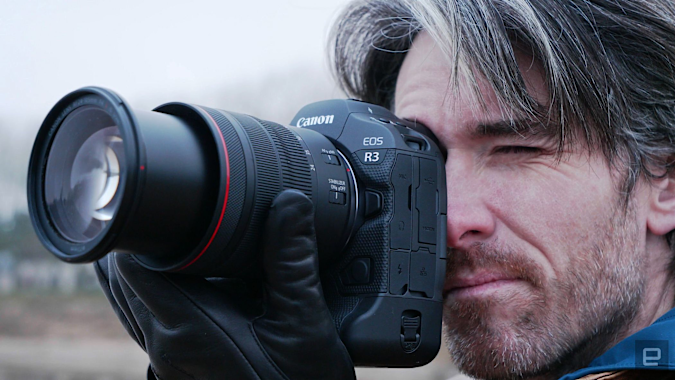
Engadget
Finally, cameras like Nikon’s Z9 and the Canon R3 are just as substantial as their DSLR counterparts and match them control for control. And if you want a professional camera that isn’t huge, Sony offers small, great-handling cameras like the A1 and A9.
Battery life is still an issue for mirrorless cameras next to DSLRs, though. The Nikon D6 can shoot a colossal 3,580 shots on a charge, while the Z9 is CIPA rated for just 770 – and that’s very high for a mirrorless camera. For the time being, mirrorless will always be at a disadvantage, but the situation is improving.
All told, with those key improvements in stacked sensors, improved EVFs and better handling, mirrorless models can now go toe to toe with DSLR cameras. In nearly every other category, however, they’re actually superior.
Take autofocus. Though DSLRs have fast dedicated phase-detect AF sensors, mirrorless models have many more phase-detect pixels directly on the main sensor. In Canon’s case, every single pixel is used for AF. That allows for quicker and more accurate autofocus, in theory.
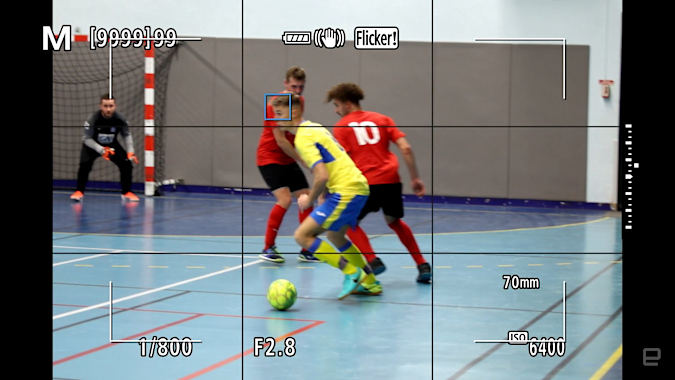
Engadget
With their hybrid phase- and contrast-detect pixels directly on the sensor, modern mirrorless cameras also win on AI smarts. Most can do subject, face and eye detection with humans, birds, animals, cars and more. That’s particularly useful for action photography to track fast moving subjects – an area that has traditionally been dominated by reflex cameras. And with the latest processors and stacked sensors, these features are finally good enough to use in real-world pro shooting.
As mentioned, some of the best mirrorless cameras now eliminate the viewfinder blackout that plagues DSLRs. And the stacked sensors also heavily reduce rolling shutter that can result in wonky, distorted photos. They’re now good enough to allow shooting of fast-moving subjects, with the advantage of being silent if you’re working at a golf tournament, for example.
Perhaps the biggest benefit is video. Photographers in many different areas are being asked to do that on top of photos, whether they do weddings or work for major news and sporting agencies.
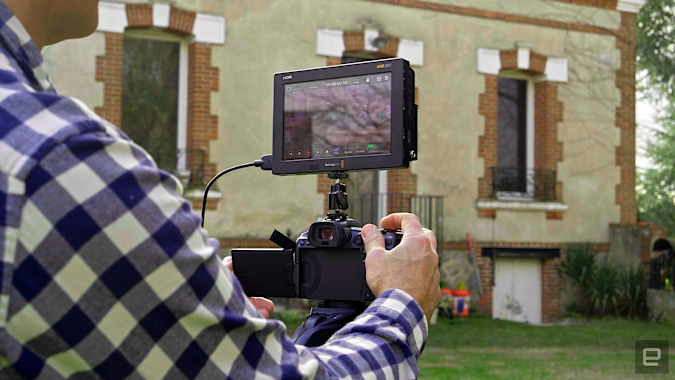
Engadget
DSLRs like Canon’s 5D helped prompt the trend to shooting high-quality video with consumer cameras and recent models like the 1DX III can handle video well. However, by and large, mirrorless models are superior. Nikon’s Z9, the Canon R3 and Sony A1 can stand up to most cinema cameras, making them true double threats. That’s thanks to the incredible video autofocus systems, resolutions up to 8K, RAW video capture, top-notch audio capabilities and more.
On top of all that, most mirrorless cameras (unlike DSLRs) have in-body stabilization so you don’t need to worry about having that feature on the lens. And speaking lenses, those designed for mirrorless cameras tend to be smaller, lighter and optically superior, because the back is closer to the sensor.
Then there’s the issue of price and cost. Mirrorless cameras are less complex than DSLRs, so they tend to be cheaper. Nikon’s Z9, for instance, costs $1,000 less than the D6, and the Canon EOS R3 is $500 cheaper than the 1DX Mark III.
Finally, with the decline of the camera market kicked off by smartphones, it doesn’t make a lot of sense for manufacturers to build both DSLRs and mirrorless cameras. Now, they appear to be concentrating on one technology in the interests of profitability.
Wrap-up
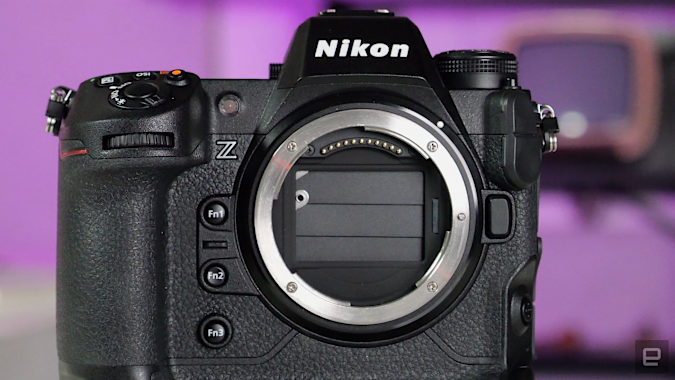
Engadget
Photographers may feel sad that DSLRs appear to be coming to the end of their road, particularly if they just bought one. Don’t panic yet, though – while Nikon and Canon appear to have stopped designing new DSLRs and lenses, they’ll continue to manufacture and sell existing models.
The key thing driving this is that mirrorless has not just caught up to, but will soon blow past reflex mirror tech. For example, Sony recently unveiled new sensors that can gather double the light of current stacked sensors, paving the way for fast shooting, even in low light. And you can expect much faster image processors, better EVFs and smarter AF systems in the near future.
In other words, future mirrorless tech could make you forget that digital cameras ever had mirrors inside. Then, we may only ever see them in their original glory – with a roll of film inside.
All products recommended by Engadget are selected by our editorial team, independent of our parent company. Some of our stories include affiliate links. If you buy something through one of these links, we may earn an affiliate commission.
Article From & Read More ( Why Nikon and Canon have given up on DSLRs - Engadget )https://ift.tt/kmKG2BR
Technology

No comments:
Post a Comment